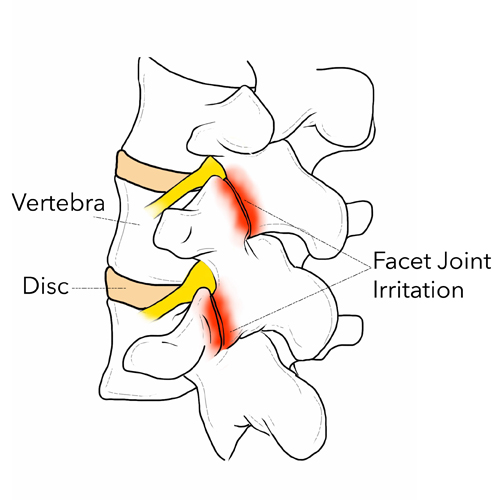Diagnosis Of “Facet Syndrome” | Akridge & Akridge Chiropractic
Your lower back is made up of five blocks of bone (vertebra) stacked on top of each other with a shock absorbing “disc” in between each level for flexibility. The larger front of the vertebra is called the “body”. The back of each vertebra is formed by two smaller bony columns (one on each side), capped with smooth joints called “facets”. Each vertebra rests on the one below in a “tripod” sort of fashion with the disc in front, and the facet joints in the back. The diagnosis of “facet syndrome” means that your facet joints have become irritated and inflamed. This problem can arise from sprains, strains, or joints that are not moving properly. Patients are more likely to develop facet syndrome if they have suffered an injury, overuse their back, have arthritis, or are overweight.
When a facet is irritated, you will likely notice pain on one side of your back that may radiate into your flank, hip, and thigh. The pain may come and go. Your pain may increase when you arch backwards or return to an upright position after bending forward. Many patients report relief when they lie down. Symptoms of facet syndrome do not usually radiate past your knee. Be sure to tell your chiropractor if your symptoms include any radiation of pain below your knee, weakness, groin numbness, changes in bowel or bladder function, or if you have a fever.
Long-standing irritation to the facet joint is thought to cause arthritis. Fortunately, our office can help. To speed your recovery, you should wear supportive shoes and avoid activities that increase your symptoms. Be sure to take frequent breaks from sitting. Your doctor may provide specific recommendations about using heat or ice at home. You may need to limit heavy physical activity, but you should avoid complete bed rest. Yoga has been shown to help back pain sufferers, so consider joining a class or picking up a DVD.


